Posts Tagged ‘Rene Lalique Biography’
Rene Lalique at the Corning Museum: Enchanted By Glass Exhibition
May 20th, 2014
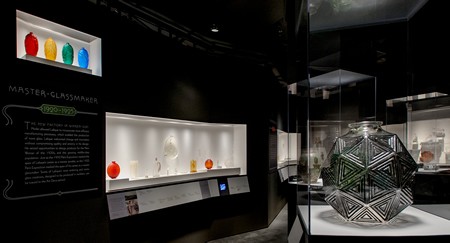
Almost a decade before the birth of Rene Lalique, in a small but burgeoning town a few miles north of Boston, a not quite 40 year old Amory Houghton got in his mind to get in the glass making business. He started with a share in one small local glass company and later acquired other glassmakers. 13 years later, in 1864 Houghton took over the Brooklyn Flint Glass Company in Brooklyn New York. Even with the help of his two sons, the Brooklyn business was financially unstable. And of course the fire was a big problem too. But along came an inspired banker from the small town of Corning New York who convinced the family (naturally money was involved) to move their business to Corning.
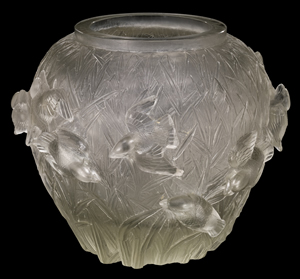 The newly renamed Corning Flint Glass Works was up and operating in 1868, but by 1870 had gone broke. Fortuitously Houghton’s two sons were able to get the business back (sans Houghton Sr.), and succeeded in getting the company on a firmer financial footing, thanks to a small number of products such as colored signal lights for railroads!* The newly renamed Corning Flint Glass Works was up and operating in 1868, but by 1870 had gone broke. Fortuitously Houghton’s two sons were able to get the business back (sans Houghton Sr.), and succeeded in getting the company on a firmer financial footing, thanks to a small number of products such as colored signal lights for railroads!*
Through the years and plenty of ups and downs, the company has had an amazing run through American history. It worked with Edison on his glass for the light bulb, and for Steve Jobs it developed the glass screens for the iPhone. It created the glass for Liquid Crystal Displays (LCDs) and invented Pyrex. It made the mirror for the Mount Palomar observatory and supplied the glass for the primary mirror in the Hubble Space Telescope. And when responding to a 1960’s era request from the British Post Office for a better and more reliable transmission material, it created the optical fiber that has revolutionized communications. And this is just a small sample of the highlights!
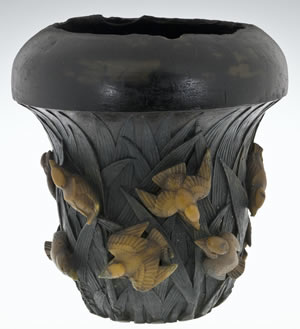 Corning has high tech, high talent, and very low turnover. They are so heavy on innovation and invention, you get the feeling that when a company needs a glass problem solved and approaches Corning, that more often than not a Corning guy in the room says, “We’ve got something on the shelf (from 1, 2, 10, or 20 years ago) we can make work for that.” Corning has high tech, high talent, and very low turnover. They are so heavy on innovation and invention, you get the feeling that when a company needs a glass problem solved and approaches Corning, that more often than not a Corning guy in the room says, “We’ve got something on the shelf (from 1, 2, 10, or 20 years ago) we can make work for that.”
At Corning’s Sullivan Park Research Center, they obtain something in the neighborhood of 25 patents a month as Corning spends around 9% of all revenue for R&D.
But the company is also strong in community and social works. One such undertaking was conceived to help celebrate the company’s 100th anniversary: the establishment of the Corning Museum of Glass (CMoG) in 1951.
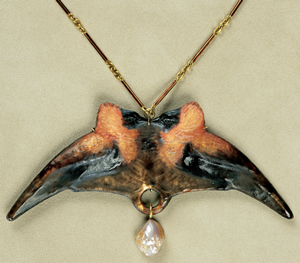 The museum is an independent and not-for-profit organization whose mission it to tell about and keep alive the history and the art of glass. In addition to being an operating museum visited by something like 400,000 people per year, it also holds seminars, classes, demonstrations, workshops, and lectures. It has everything from glassmaking to glass breaking demonstrations, and museum visitors can literally make their own glass as part of their experience at the Corning. On top of all that, the museum is active in both scientific research and publishing on a wide variety of glass related topics. The museum is an independent and not-for-profit organization whose mission it to tell about and keep alive the history and the art of glass. In addition to being an operating museum visited by something like 400,000 people per year, it also holds seminars, classes, demonstrations, workshops, and lectures. It has everything from glassmaking to glass breaking demonstrations, and museum visitors can literally make their own glass as part of their experience at the Corning. On top of all that, the museum is active in both scientific research and publishing on a wide variety of glass related topics.
All in all, the museum is nearing 50,000 different glass objects in its collection that span roughly 35 centuries of glassmaking.
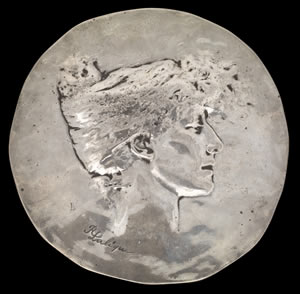 Also part of the museum is the Rakow research library (named after significant benefactors of the museum), the leading research library on glass anywhere in the world. The library has an extensive collection of original period materials on all aspects of glass and glassmaking. Of note is that the collection includes some great original materials related to Rene Lalique (yes, we’re getting to that guy soon:) some of which previously resided right here at World Headquarters! Of course, these are but a small part of the over 2000 documents relating to Lalique’s glass production housed at the Rakow. Also part of the museum is the Rakow research library (named after significant benefactors of the museum), the leading research library on glass anywhere in the world. The library has an extensive collection of original period materials on all aspects of glass and glassmaking. Of note is that the collection includes some great original materials related to Rene Lalique (yes, we’re getting to that guy soon:) some of which previously resided right here at World Headquarters! Of course, these are but a small part of the over 2000 documents relating to Lalique’s glass production housed at the Rakow.
Of the tens of thousand of objects at the Corning, until recently only about 200 were directly related to Rene Lalique. Over half of those were acquired in the early 1980’s, comprising rare models and prototypes (work pieces) which had been kept together by a Rene Lalique et Cie factory supervisor from the period.
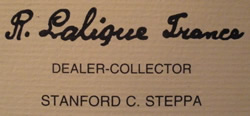 But in 2011, Stanford and Elaine Steppa, New Jersey residents with a longtime involvement in the works of the great Lalique, donated about 400 items to the museum. Most of the items were commercial production pieces, which by their numbers sampled the largest part of the gamut, in time and types, of Lalique’s commercial works. And there were also a few amazing rare unique and nearly unique items as well. But in 2011, Stanford and Elaine Steppa, New Jersey residents with a longtime involvement in the works of the great Lalique, donated about 400 items to the museum. Most of the items were commercial production pieces, which by their numbers sampled the largest part of the gamut, in time and types, of Lalique’s commercial works. And there were also a few amazing rare unique and nearly unique items as well.
So now with around 600 pieces representing everything from the conception to the process to the results, the reference material to back stop it all, and the ability to borrow objects to fill in a random blank or two**; suddenly the story appears in the totality of the materials and objects.
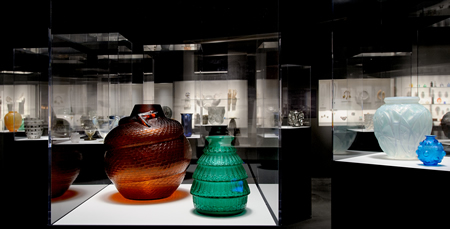
Suddenly, it’s not a good looking glass vase from 1922; it’s the story of the artist and his design development and influences (the swans on the pond or the birds in the trees at the country house). It’s how the glass thing got started (the jewelry, the bottles), how it was industrialized (the models, the patents), how the art was conceived (the drawings) and with what means and what steps (the work pieces) the final object was created. Suddenly, what we call a story, they call an exhibition!
It’s the visual and referential story of Rene Lalique, told one piece at a time through about 200 objects, and amazing period reference material. It’s “Rene Lalique: Enchanted by Glass” at the Corning.
The exhibition is already up and open (as of Saturday May 17th) and will continue through January 4th, 2015.
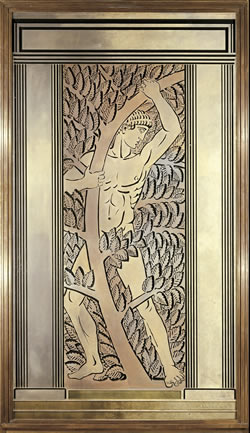 Our takeaway*** from an in-depth interview with the exhibition curator Kelley Jo Elliot**** can be boiled to down to one overriding message. The purpose of the exhibition is to tell the story. From the Cire Perdue Vase, to tell how he did it and how it came to be. From the 1893 exhibition medal, to tell what his goals were, what was important to him, and how he was trying to achieve his aims. From the round green glass invitation medallion, to show his technique and his touch. And from the iconic commercial R. Lalique items such as the Serpent Vase, the Tourbillons Vase, or the Suzanne Statue, to be able to explain in the context of Lalique, his world and his history, how these wonderful art glass pieces were developed. Our takeaway*** from an in-depth interview with the exhibition curator Kelley Jo Elliot**** can be boiled to down to one overriding message. The purpose of the exhibition is to tell the story. From the Cire Perdue Vase, to tell how he did it and how it came to be. From the 1893 exhibition medal, to tell what his goals were, what was important to him, and how he was trying to achieve his aims. From the round green glass invitation medallion, to show his technique and his touch. And from the iconic commercial R. Lalique items such as the Serpent Vase, the Tourbillons Vase, or the Suzanne Statue, to be able to explain in the context of Lalique, his world and his history, how these wonderful art glass pieces were developed.
To help put it all in perspective the exhibition is organized in a couple of ways, including by timeline. So the visitor can see the development of Lalique from unique jewelry all the way to the later big architectural pieces; which would include by the way, the amazing 1932 figural panel from the Wanamaker’s store in Philadelphia.
The museum is located in the Finger Lakes***** region of New York State. It’s 4 or 5 hours drive from NYC, and about the same from Washington D.C.. From Niagara Falls it’s about 3 hours. The closest decent size city is Ithaca, home to Cornell University. And there is small regional airport (Elmira/Corning) that is only about a 15 minute drive (paid shuttle available) to the museum that has flights from Detroit, Philadelphia, Chicago, and Orlando.
The exhibition is included as part of the general museum visitor charge. The museum is open 7 days a week from 9:00 AM to 8:00 PM during the summer, but after Labor Day the closing time moves up to 5:00 PM. Further details can be found at the museum website.
In conjunction with the exhibition, the museum has also published a thoughtful and informative nearly 400 page reference book about Rene Lalique and the Corning, containing hundreds of photos of both commercial and unique pieces, and pictures of a large number of original models. The book is coincidentally titled “Rene Lalique Enchanted by Glass”. Shown here from the book, in addition to a photo of the dust jacket, is a photo of the extremely rare non-commercial Levrier Car Mascot created as a gift for the Prince of Wales in 1929, next to a photo of an original plaster model for that mascot. Who else but the Corning can tell the story like this? The book is out of print, but check the library here on the site or write us directly about getting you one.
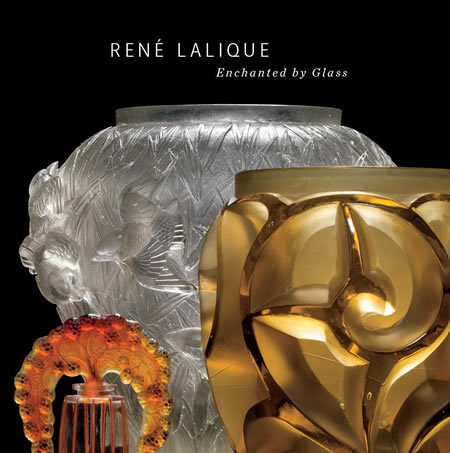
Our final thoughts:
This is not a show where a bunch of brightly colored vases, some valuable jewelry and a few unique objects are tossed together and the exhibitor is just saying, “Hey, look at this, didn’t this guy make cool stuff”. The Corning is fortunately situated with its collection and resources to bring this stuff to life, and to put it in perspective and context historically, educationally, artistically and industrially. It’s a great opportunity for anyone interested in the Rene Lalique and his works. And heck, it’s just an added kicker that the Finger Lakes region of New York is a great place to visit in the summertime!
* Persistence paid off for the Houghton clan. The 1957 Forbes Magazine list of the 76 richest Americans listed both Amory Houghton and Arthur A. Houghton Jr. at between 100 million and 200 million dollars each. In today’s dollars that’s in the billion range (give or take a few hundred million of course).
** Included in the exhibition are 14 unique items (designs, objects, jewelry) on loan from other museums. The lenders are the Calouste Gulbenkian in Lisbon Portugal; the Chazen in Madison Wisconsin; The Walters in Baltimore Maryland, the VMFA in Richmond Virginia; the Smithsonian in Washington D.C.; and the Musée des arts décoratifs in Paris, France. All are linked from our page listing over 80 museums around the world containing the works of Rene Lalique.
*** The “takeaway” is not a quote. It’s more like the gist, the central point, or the main idea as we took it.
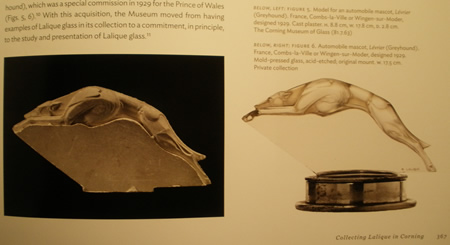
**** Kelley is the Assistant Curator of Modern and Contemporary Glass at the Corning. She has a Fine Art Bachelor’s degree and a Master’s in Decorative Arts History and has worked with a range of museums. She has a strong interest and background in the works of Rene Lalique and in the French artistic glass and jewelry milieu from which he emerged.
***** The Finger Lakes region of New York State is so named because of the pattern of a string of long narrow (and narrowing) lakes which run down from below the New York State Thruway (AKA I-90 or the Thomas E Dewey Thruway) roughly bounded by I-390 in the west and I-81 in the east; kind of in-between but below Rochester and Syracuse. The lakes look like fingers on a map.
Tags: R Lalique Exhibitions and Rene Lalique Exhibitions, Rene Lalique Biography
Posted in Articles of Interest to Collectors, R Lalique and Rene Lalique Auction News and Results, R Lalique Ramblings | 1 Comment »
R.Lalique Glass Church: Rene Lalique Architectural & Religious Lalique Glass: St. Matthew’s Church in Jersey
August 18th, 2011
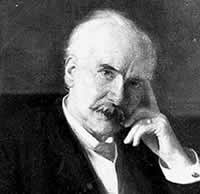 In 1860, the year before the American Civil War started, 10 year old Jesse Boot of Nottingham England began helping his mother run the family medicine shop when his father John died. By age 13 he left school to concentrate on his work in the shop. In the ensuing decades, Jesse would turn the single medicine shop into the major national chain Boots the Chemists. 60 years later in 1920, he sold control of the “Chemists to the Nation” to an American company. Jesse died on the Channel Island of Jersey 11 years later in 1931. In 1860, the year before the American Civil War started, 10 year old Jesse Boot of Nottingham England began helping his mother run the family medicine shop when his father John died. By age 13 he left school to concentrate on his work in the shop. In the ensuing decades, Jesse would turn the single medicine shop into the major national chain Boots the Chemists. 60 years later in 1920, he sold control of the “Chemists to the Nation” to an American company. Jesse died on the Channel Island of Jersey 11 years later in 1931.
Along the way Boot would be knighted Sir Jesse Boot (1909), create a baronet (1917), and in 1929, become Baron Trent of Nottingham, (not as cool as Sheriff, but still a great title:), aka Lord Trent. He did not live to see his son John, the 2nd Baron Trent and his own father’s namesake, re-acquire control of the chain in 1933 in the midst of the depression.
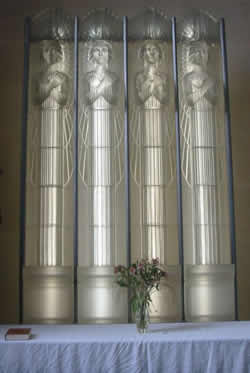 Boot was also a philanthropist, especially in Nottingham and in Jersey. For one of many examples, he donated the land for what is now the University of Nottingham, which opened in 1928, where the Jesse Boot Chair in Chemistry was named in his honor. Boot was also a philanthropist, especially in Nottingham and in Jersey. For one of many examples, he donated the land for what is now the University of Nottingham, which opened in 1928, where the Jesse Boot Chair in Chemistry was named in his honor.
Boot’s wife, Lady Florence Trent (her maiden name was Florence Rowe) survived him. She kept her principal residence in Jersey, the place they had first met. But Lady Trent also kept a residence on the French Riviera in Cannes, where fortuitously, a famous Frenchman also kept a home; a man who like her deceased husband, had achieved phenomenal success satisfying the new consumer demand created by the industrial revolution. Yes readers, Rene Lalique kept a place in Cannes and was a neighbor of Lady Trent.
In 1932, the year after her husband’s death, Lady Trent asked her neighbor to design new interior fittings in glass for the 1840’s era St. Matthew’s Church of Millbrook located just across the road from her Jersey home which she called Villa Millbrook. It was to be a major architectural undertaking in honor of Baron Trent and Lalique agreed to take the commission. Two years later, in 1934, Lalique’s fabulous undertaking was completed and installed in St. Matthew’s, complemented by additional interior modifications by the Jersey architect A.B. Grayson, an accomplished art deco designer, most notably of private homes.
Lalique glass includes the communion rail, communion table, screens, the altar cross and pillars, a Lalique glass font, window and door panels, and a reredos (altar screen). The art deco Lalique design highlights include angelic figures and Jersey lilies.
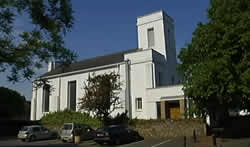
Today St. Matthew’s remains a functioning community place of worship. But owing to the amazing work of the great Lalique, it is better known worldwide as “The Glass Church”. So it’s also an Art Deco treasure of Jersey and a tourist attraction in addition to being a religious establishment.
Last year, the 170 year old Church commenced its first major renovation in over 70 years. The total cost is estimated at £1,000,000. We were alerted to the renovation a year ago through a BBC article which detailed the renovation project and linked out to three reference sources: the “States of Jersey” website, the “Glass Church” website, and to the “Rene Lalique Worldwide Gathering Place”! How great is that? The overhaul is planned to include:
Conservation to the Lalique Glass and the supporting structures of the glass.
New roof.
Restoration of the bell housing and bells.
Replace the electrical wiring and update the lighting.
New heating system.
Interior redecoration and new landscaping.
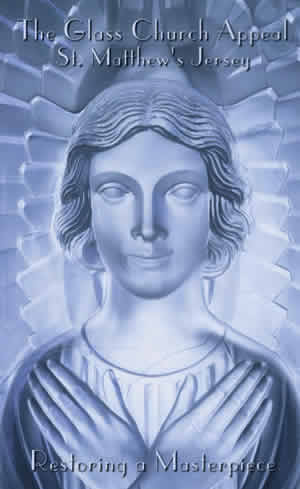 An organization named The Friends of the Glass Church has been set-up under the auspices of the Lieutenant Governor of Jersey, Lieutenant General Andrew Ridgway, to raise funds for the renovations. They have already raised approximately £140,000 toward the project. Updating of the roof was finished in 2010. Also the States of Jersey has approved a matching funds grant of £125,000. Phase two, which is the refurbishment of the bell tower, bells, and some asbestos removal, should be completed in early October, at which time the church will re-open. An organization named The Friends of the Glass Church has been set-up under the auspices of the Lieutenant Governor of Jersey, Lieutenant General Andrew Ridgway, to raise funds for the renovations. They have already raised approximately £140,000 toward the project. Updating of the roof was finished in 2010. Also the States of Jersey has approved a matching funds grant of £125,000. Phase two, which is the refurbishment of the bell tower, bells, and some asbestos removal, should be completed in early October, at which time the church will re-open.
Details of how you can contribute to the project can be found at the Friends of the Glass Church website or the Church’s website, both of which are linked previously. We urge you to consider generously supporting this uniquely Rene Lalique effort.
We spoke with church officials in preparation for this article and were given the following visitor information:
Visitors are welcome at the Church Monday thru Friday from 9:00 AM to 5:30 PM. The Church is closed on Saturdays. Regular services are held on Sunday at 11:00 AM and visitors are welcome to attend.
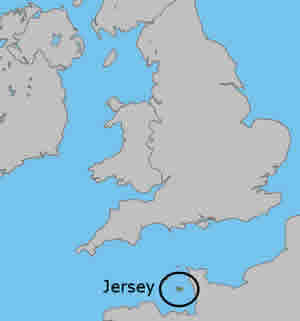 St. Matthew’s home, the island of Jersey has a rich history owing to its location between France and England. It has a population of around 100,000, and both French and English are spoken there. Jersey is a separate possession of the crown; it’s a dependency and not part of the United Kingdom. It even has its own currency, though several other currencies also circulate on the island. It’s a crossroads of cultures and activities. St. Matthew’s home, the island of Jersey has a rich history owing to its location between France and England. It has a population of around 100,000, and both French and English are spoken there. Jersey is a separate possession of the crown; it’s a dependency and not part of the United Kingdom. It even has its own currency, though several other currencies also circulate on the island. It’s a crossroads of cultures and activities.
If you plan to visit, almost everything you ever wanted to know about Jersey can be found at their Jersey.com website, including travel, lodging, attraction and activity choices.
And finally, if you’d like to see many examples of architectural elements created by Rene Lalique, check out the Lalique Architectural Glass page in the R. Lalique Catalog here on the website.
Tags: R Lalique Architecture - Rene Lalique Architecture, Rene Lalique Biography, Rene Lalique History and R Lalique History
Posted in Articles of Interest to Collectors, R Lalique and Rene Lalique History | No Comments »
Lalique Family: Did Anyone Know Rene Lalique Had a Twin Brother?
June 12th, 2010
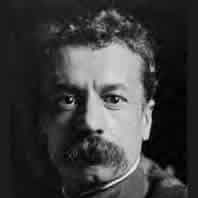 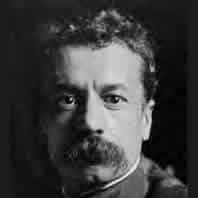
New information coming out of France today reveals that Rene Lalique had a twin brother! It’s unbelievable, check it out here in a saved/cached image version of the original listing online***. The news is already rocking the art world as biographers scramble to update their books, college professors rush to update their art history course material, and major museums hurry to add this new information to their displays. The whole story of Art Nouveau to Art Deco is being re-written as art historians descend on the little Village of Ay, the birthplace of the Lalique twins, gathering any scraps of information they can find about this startling news.
It always seemed strange that one Lalique could do so much in just one lifetime. The whole jewelry thing, then the glass, all the exhibitions, etc. etc. Didn’t it seem like he had to be in two places at once? And check out the photos. Notice the differences? Yet still is a very strong family resemblance.
Now that we know there was more than one of these guys, it all makes total sense. Who knew?
If you want to learn more about Rene Lalique and the Lalique family, check out the Lalique Bio at RLalique.com.
***You may have to use the zoom function of your browser (or whatever program opens images for you) to get the cached image to expand in the window if it does not appear full size. After clicking on the link to the item, a new window will open with the cached image in it. On a Mac, just click on the image and see if that expands it. If not, press the apple key and click on the cached image in your browser window. On a PC, hold down the alt key while clicking on the cached image.
Tags: Rene Lalique Biography, Rene Lalique History and R Lalique History
Posted in R Lalique and Rene Lalique History | No Comments »
Rene Lalique Glass Panel Doors: Lalique’s Doors at 40 Cours la Reine – A Lalique Architectural Landmark
February 19th, 2010
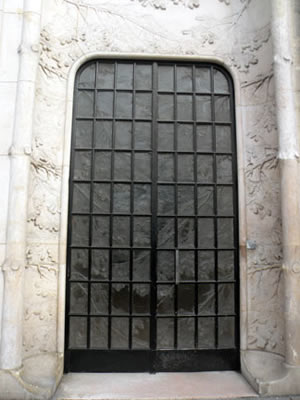 Rene Lalique moved in 1902 to a new residence and workshop at 40 Cours la Reine in Paris. The building was a renovation totaling five floors. The first two floors were show and retail space for Lalique’s expanding business. There was also Lalique’s workshop and Lalique’s residence above. Rene Lalique moved in 1902 to a new residence and workshop at 40 Cours la Reine in Paris. The building was a renovation totaling five floors. The first two floors were show and retail space for Lalique’s expanding business. There was also Lalique’s workshop and Lalique’s residence above.
It was here, that Lalique installed what might be his first and most important architectural statement; the famous Lalique glass panel doors. The doors consisted of glass panels set in a metal frame.
These doors contain a design of pinecones and branches with each panel being a different part of the picture. The relief glass design of the doors continues from the glass panels onto the exterior of the building. It’s also echoed in the railings that rim the windows of the residence!
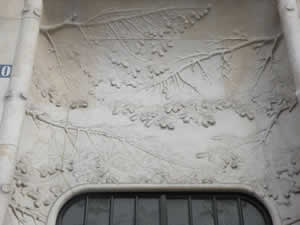 Lalique died at the age of 85 in this same house 43 years later as World War II was coming to and end. Lalique died at the age of 85 in this same house 43 years later as World War II was coming to and end.
Over a century later, the doors remain a quiet yet iconic reminder of the creativity, foresight, and design talent of Rene Lalique. And as Nicholas Dawes notes in his standard reference work “Lalique Glass”, this single creative element incorporated into the exterior decor of his own shop and residence, may have been responsible for many future architectural commissions as potential clients came to the shop and experienced the wonder of the great glass panel doors.
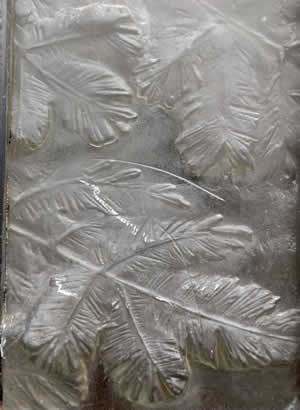 If you are in Paris though, you may have trouble finding the doors at 40 Cours la Reine. Why? Because the street has been renamed to 40 Cour d’Albert! If you are in Paris though, you may have trouble finding the doors at 40 Cours la Reine. Why? Because the street has been renamed to 40 Cour d’Albert!
But worry not if you cannot find or cannot go!
We have found a good-humored guy from the east coast, Richard Nahem, who now lives in Paris and who loves to take photos. Richard has taken some great detailed pictures of the former Lalique residence including the famous Lalique Glass doors. So we thought it would be great to share this bit of Lalique architectural history with you as shown through those photos
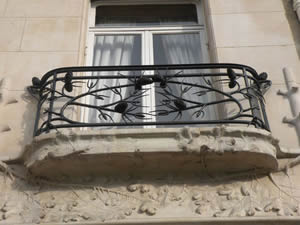 And don’t forget, you can find links to all resources related to Rene Lalique Architecture at RLalique.com in the Rene Lalique Architecture Section of the Lalique Biography. And don’t forget, you can find links to all resources related to Rene Lalique Architecture at RLalique.com in the Rene Lalique Architecture Section of the Lalique Biography.
By the way, Richard runs a very entertaining and informative blog about life in Paris, aptly named eyepreferparis.com! Of course, if this writer were penning a location touting blog, it would likely be named EyePreferHangingOutAtWorldHeadquarters.com!
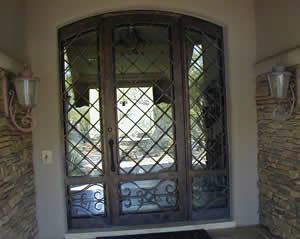 And lest you be left in wonder, yes, World Headquarters is not without its own great glass and metal work door. Notice all the similarities? The great Lalique doors have glass and our door has glass. The great Lalique doors have metal and our door has metal. The Lalique doors open and close and our door opens and closes. Pretty similar right? It’s almost freaky the number of things the World Headquarter door has in common with the Lalique doors. Too bad it can’t hold a candle to* the work of the great Rene Lalique 🙂 Hmmmmm….. And lest you be left in wonder, yes, World Headquarters is not without its own great glass and metal work door. Notice all the similarities? The great Lalique doors have glass and our door has glass. The great Lalique doors have metal and our door has metal. The Lalique doors open and close and our door opens and closes. Pretty similar right? It’s almost freaky the number of things the World Headquarter door has in common with the Lalique doors. Too bad it can’t hold a candle to* the work of the great Rene Lalique 🙂 Hmmmmm…..
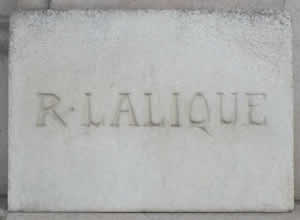 *”Can’t hold a candle to” is an expression from the days before electric lights. When a person had to do some work in the dark, it might require a helper to hold a candle to illuminate the work area. Simple job, holding the candle. Of course, if your skill level or attention level or work ethic was so low that you could not properly perform the task of holding the candle it would put you in a negative light (no pun intended on the light thing). Anyway, can’t hold a candle to whatever, became a phrase to denote low talent or low worthiness by comparison to something else. *”Can’t hold a candle to” is an expression from the days before electric lights. When a person had to do some work in the dark, it might require a helper to hold a candle to illuminate the work area. Simple job, holding the candle. Of course, if your skill level or attention level or work ethic was so low that you could not properly perform the task of holding the candle it would put you in a negative light (no pun intended on the light thing). Anyway, can’t hold a candle to whatever, became a phrase to denote low talent or low worthiness by comparison to something else.
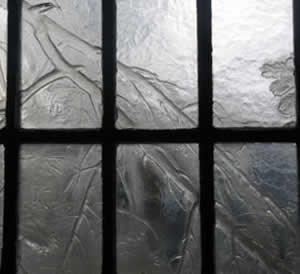 For example, there is no website in the world about Rene Lalique and his works that can hold a candle to RLalique.com! Don’t know how we thought up this great example, it just popped in our heads! For example, there is no website in the world about Rene Lalique and his works that can hold a candle to RLalique.com! Don’t know how we thought up this great example, it just popped in our heads!
Tags: R Lalique Architecture - Rene Lalique Architecture, Rene Lalique Biography, Rene Lalique History and R Lalique History
Posted in Articles of Interest to Collectors, R Lalique and Rene Lalique History | No Comments »
Rene Lalique Statuette De La Fontaine Ashtray: The 1925 Art Deco Exposition Fountain and Source De La Fontaine Lalique Statues
January 7th, 2010
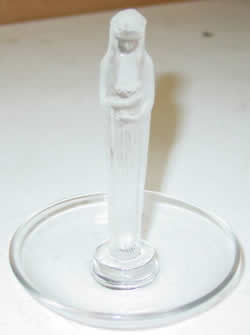 Rene Lalique created a wonderful fountain for the 1925 Paris Exposition Des Arts Décoratifs, the Art Deco Exposition. And full size Source De La Fontaine Lalique statues of the designs that were incorporated into that fountain sell for many thousands of dollars. In creating his great fountain, Les Sources De France, Rene Lalique was following in the footsteps of the tradition in Paris of the great French fountain builders dating back to the middle ages when fountains were first constructed to provide drinking water to the people of Paris! Rene Lalique created a wonderful fountain for the 1925 Paris Exposition Des Arts Décoratifs, the Art Deco Exposition. And full size Source De La Fontaine Lalique statues of the designs that were incorporated into that fountain sell for many thousands of dollars. In creating his great fountain, Les Sources De France, Rene Lalique was following in the footsteps of the tradition in Paris of the great French fountain builders dating back to the middle ages when fountains were first constructed to provide drinking water to the people of Paris!
Lalique knew he had conceived a great design, not just for the fountain in its entirety, but also in the style and motif of the large glass statues which were the fountain elements. As a result, he also made a miniature statuette model in the style of the fountain statues set in his classic round cendrier with centerpiece. In this case, the centerpiece is the Statuette De La Fontaine.
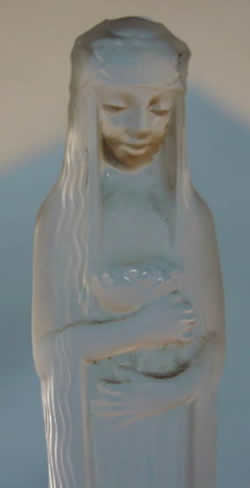 Today, this style cendrier in all its forms is commonly called a ring dish by sellers either because they don’t know, or because “ashtray” is not usually the best selling point. Today, this style cendrier in all its forms is commonly called a ring dish by sellers either because they don’t know, or because “ashtray” is not usually the best selling point.
A nice looking example of the Rene Lalique Cendrier Statuette De La Fontaine has appeared at auction, in apparently great condition with a starting price of just $99 and no reserve. The seller states there is no damage.
Here is a link to a saved/cached image version of the original 130357207907 listing online. You may have to use the zoom function of your browser (or whatever program opens images for you) to get the cached image to expand in the window if it does not appear full size. After clicking on the link to the item, a new window will open with the cached image in it. On a Mac, just click on the image and see if that expands it. If not, press the apple key and click on the cached image in your browser window. On a PC, hold down the alt key while clicking on the cached image.
This ashtray is listed in the Lalique Auctions Section at RLalique.com.
And you can learn more about Rene Lalique’s contributions to the 1925 Paris Expo and the international acclaim he achieved by his accomplishments there, in the Lalique Books and Library Section! Most of the Lalique biography books available there cover the subject in some detail.
The Statuette De La Fontaine Cendrier: A clean design, a no-reserve auction, and a relatively inexpensive memento of the great Lalique Art Deco Fountain.
Tags: R Lalique and Rene Lalique on Ebay, R Lalique Exhibitions and Rene Lalique Exhibitions, R Lalique Rene Lalique Auctions News and Results, Rene Lalique Ashtrays and R Lalique Ashtrays, Rene Lalique Biography, Rene Lalique History and R Lalique History
Posted in R Lalique and Rene Lalique Auction News and Results, R Lalique and Rene Lalique History | No Comments »
Lalique Art History And Design – The Flora and Fauna of Rene Lalique – A Scholarly Lecture In New York City
December 8th, 2009
Rene Lalique made extensive use of Flora and Fauna in his famous Lalique Jewelry, and in the majority of his Lalique Glass designs. Nicholas Dawes, noted Rene Lalique personality, Antiques Roadshow Appraiser, and author of the seminal 1986 work “Lalique Glass“, is giving a lecture today in New York City analyzing the historical use of Flora and Fauna as art forms by Rene Lalique.
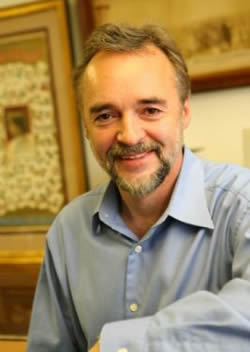 Mr. Dawes is in New York this week in his role as a consignment director for Heritage Auctions where he is overseeing this year’s largest Rene Lalique Auction on Thursday December 10th. We have previously written about this exciting Lalique Auction and have also included details in the Rene Lalique Auctions Worldwide Section here at RLalique.com! Mr. Dawes is in New York this week in his role as a consignment director for Heritage Auctions where he is overseeing this year’s largest Rene Lalique Auction on Thursday December 10th. We have previously written about this exciting Lalique Auction and have also included details in the Rene Lalique Auctions Worldwide Section here at RLalique.com!
This scholarly and informative lecture will be in Manhattan at 104 East 25th just off Park Avenue on the 3rd Floor at 4:00 PM. Readers of RLalique.com that will be in New York City today are invited to attend. There is no charge, and there will be a cocktail reception following the 1 hour lecture where attendees will also be able to view the many R Lalique items in Thursday’s auction. If you tell Mr Dawes you read about the lecture here at RLalique.com, he’ll buy you a drink at the reception! But even if you don’t tell him you saw it here, cocktails are free 🙂 and you will get a chance to talk to Nick and other Rene Lalique enthusiasts and collectors in attendance.
A wonderful opportunity to learn more about the talent and creativity of the great Rene Lalique.
Tags: R Lalique and Rene Lalique News, Rene Lalique Biography, Rene Lalique History and R Lalique History
Posted in R Lalique and Rene Lalique History, R Lalique, Rene Lalique, and RLalique News | No Comments »
Lalique Designer de Luxe! Rene Lalique’s Death: Report and Obituary in Time Magazine’s May 21, 1945 Issue
June 22nd, 2009
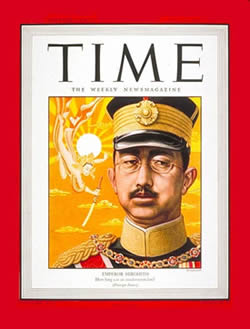 Rene Lalique died quietly in the home of his famous glass panel doors, at 40 Cours la Reine in Paris on May 1st, 1945* just a week before Victory in Europe (VE) Day, marking the Atlantic end of WW II. Rene Lalique died quietly in the home of his famous glass panel doors, at 40 Cours la Reine in Paris on May 1st, 1945* just a week before Victory in Europe (VE) Day, marking the Atlantic end of WW II.
Lalique had spent his last several years cut off from the world, his painful rheumatism deforming his hands, and preventing him even from drawing; as recounted in a letter from Suzanne Lalique-Haviland dated June 6th, 1945 to Calouste Gulbenkian. It was just days before he died, that Rene Lalique found out that his Wingen-sur-Moder factory was liberated by the Allies, that it had been saved, and that his valued molds were intact!
At the time of Lalique’s death, major news was coming into the United States not just from Europe, but also from the Pacific and elsewhere, as American manufacturing, technological, and military might, along with the Allied powers, was bringing the worldwide chaos to an end.
In the onslaught of news and events pouring in from all over the world, Time Magazine took note of the passing of perhaps the greatest artist of the 20th Century; and certainly the greatest industrial art designer and manufacturer the world had ever seen.
An amazingly prolific man, Lalique’s talents created or shaped decorative arts from glass tableware, to perfume bottles, car mascots and much more. Yet he was a man who’s greatest achievements in artistic design may have actually been in an earlier career in another century; as Emile Galle so subtly noted, when Lalique became the “inventor of modern jewelry”.
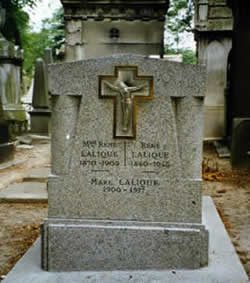 Rene Lalique rode the industrial revolution and the new consumerism to the top in many fields. He saw opportunity in many areas of the industrial revolution. And he worked out the manufacturing techniques to make his useful consumer art achievable and affordable in a way and on a scale that no artist before him had ever accomplished. He was the right man in the right place at the right moment in time. Rene Lalique rode the industrial revolution and the new consumerism to the top in many fields. He saw opportunity in many areas of the industrial revolution. And he worked out the manufacturing techniques to make his useful consumer art achievable and affordable in a way and on a scale that no artist before him had ever accomplished. He was the right man in the right place at the right moment in time.
An original Time Magazine May 21st, 1945 Issue is available along with countless other period publications related to Lalique and his R Lalique works, in our Rene Lalique Books Section, here at RLalique.com.
And for more information on the life and times of Rene Lalique, check out our Lalique biography.
*Lalique’s date of death was reported by the New York Times on May 10, 1945, as being on May 9, 1945. Other sources, including the R.Lalique Catalogue Raisonne, place the date of his death as May 5, 1945. The actual date according to the Musée Lalique was May 1, 1945.
Tags: R Lalique and Rene Lalique Library, Rene Lalique Biography, Rene Lalique History and R Lalique History
Posted in R Lalique and Rene Lalique History | No Comments »
Lalique and Haviland Come Full Circle in London Flagship Lalique Crystal Store
April 14th, 2009
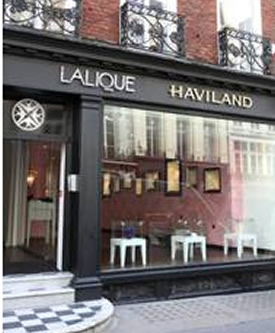 Lalique and Haviland Join Forces and Open A Joint Flagship Store in London: A renewal of old ties between the family name of Rene Lalique and the family name of David Haviland was cemented in London recently, with the opening of the new Lalique Haviland joint flagship store on Conduit Street. This store name recalls ties between these two great families that go back to 1916. Lalique and Haviland Join Forces and Open A Joint Flagship Store in London: A renewal of old ties between the family name of Rene Lalique and the family name of David Haviland was cemented in London recently, with the opening of the new Lalique Haviland joint flagship store on Conduit Street. This store name recalls ties between these two great families that go back to 1916.
Here is a brief history: Haviland was started in 1842 by David Haviland. He was a member of a New York family that imported and sold china. In the early 1840’s he traveled to Limoges France where he founded the great Haviland manufacture. His two sons, Charles and Theodore were active in the business, Theodore in New York dealing with marketing matters, and Charles, the oldest of the two sons in France at the factory in Limoges. After David Haviland died in 1879, Theodore moved to Limoges to participate more directly in the management of company affairs. For whatever reasons, by 1891 the two brothers had irreconcilable differences and joint control of the Haviland Company was dissolved, with each brother going it his own way. Charles operated under the old family company name of Haviland et Cie, and Theodore under the name Theodore Haviland Limoges. The two brothers competed not just with other companies, but against each other. The last decade of the 19th century also saw the rise of the great Rene Lalique, who’s reputation as a jeweler and designer in Paris had spread worldwide. Lalique’s primary focus in the last decade of the 1800’s was jewelry and unique objects. It was the famous glassmaker Emile Galle who recognized Rene Lalique as the “the inventor of modern jewelry”.
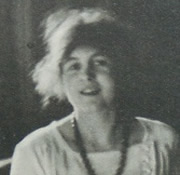 In 1892, Lalique had a daughter by his second wife, whom they named Suzanne. Suzanne became an accomplished designer and painter in her own right, without any formal art training. Growing up as close to the great Lalique as one can get, was all the training required. Her vase designs cover two pages in the R Lalique Catalogue Raisonne, and her paintings and decorative arts are now spread around the world. At least two Rene Lalique production vases were designed by Suzanne Lalique; the vases Sophora and Penthievre. She also created great porcelain designs for Haviland during the last half of the 1920’s and into the early 1930’s, and she is credited with having painted in 1931 the only recorded portrait of Rene Lalique created late in his life. And of esoteric interest to both historians and stemware collectors, is the SH monogram which graces the stemware set Monogramme in the Catalogue Raisonne. These are the stems that start at #5042 on Page 831 of the 2004 edition. These stems were sold in minimum orders of 100 pieces. But for the big order, Lalique et Cie would put your own monogram on each stem. That’s probably how they figured out the name for this design! Apparently, Suzanne Haviland was an early customer :). In 1892, Lalique had a daughter by his second wife, whom they named Suzanne. Suzanne became an accomplished designer and painter in her own right, without any formal art training. Growing up as close to the great Lalique as one can get, was all the training required. Her vase designs cover two pages in the R Lalique Catalogue Raisonne, and her paintings and decorative arts are now spread around the world. At least two Rene Lalique production vases were designed by Suzanne Lalique; the vases Sophora and Penthievre. She also created great porcelain designs for Haviland during the last half of the 1920’s and into the early 1930’s, and she is credited with having painted in 1931 the only recorded portrait of Rene Lalique created late in his life. And of esoteric interest to both historians and stemware collectors, is the SH monogram which graces the stemware set Monogramme in the Catalogue Raisonne. These are the stems that start at #5042 on Page 831 of the 2004 edition. These stems were sold in minimum orders of 100 pieces. But for the big order, Lalique et Cie would put your own monogram on each stem. That’s probably how they figured out the name for this design! Apparently, Suzanne Haviland was an early customer :).
 As things would have it, in 1916 Suzanne met the photographer Paul Haviland, the son of Charles Haviland, when Paul was slightly older than shown here in an 1884 portrait at age 4 by noted painter Pierre-Auguste Renoir. Paul was an accomplished photographer, and among his other claims to fame, he would be given photo credit for the pictures in the 1932 R.Lalique Catalogue, a fact omitted from the 1981 Dover reprint! Paul was born in Paris, but graduated from Harvard and spent much of his early life in the United States. Having been called back to France to help with the management of the company in 1916, that same year he met and by 1917 would marry Suzanne Lalique. Long story short, Charles died in 1921. Theodore died two years earlier in 1919. The Haviland et Cie family businesses of Charles had lots of problems and became a full employment company for lawyers! Haviland et Cie eventually slipped out of family ownership and was liquidated in 1931, but the Theodore branch of the family continued on with their company under the leadership of Theodore’s oldest son William, who had joined the company in 1903 and who took control upon the death of his father. The Haviland name and company was restored to unity and total family ownership in 1941 under William Haviland, when he and other relatives purchased all the names, designs, and rights of the previously liquidated Haviland et Cie. One interesting point is that from 1942 to 1957, Haviland was produced in Pennsylvania, production having been started up there by William in the chaos that was World War II. As things would have it, in 1916 Suzanne met the photographer Paul Haviland, the son of Charles Haviland, when Paul was slightly older than shown here in an 1884 portrait at age 4 by noted painter Pierre-Auguste Renoir. Paul was an accomplished photographer, and among his other claims to fame, he would be given photo credit for the pictures in the 1932 R.Lalique Catalogue, a fact omitted from the 1981 Dover reprint! Paul was born in Paris, but graduated from Harvard and spent much of his early life in the United States. Having been called back to France to help with the management of the company in 1916, that same year he met and by 1917 would marry Suzanne Lalique. Long story short, Charles died in 1921. Theodore died two years earlier in 1919. The Haviland et Cie family businesses of Charles had lots of problems and became a full employment company for lawyers! Haviland et Cie eventually slipped out of family ownership and was liquidated in 1931, but the Theodore branch of the family continued on with their company under the leadership of Theodore’s oldest son William, who had joined the company in 1903 and who took control upon the death of his father. The Haviland name and company was restored to unity and total family ownership in 1941 under William Haviland, when he and other relatives purchased all the names, designs, and rights of the previously liquidated Haviland et Cie. One interesting point is that from 1942 to 1957, Haviland was produced in Pennsylvania, production having been started up there by William in the chaos that was World War II.
Fast forwarding a bit, control of Haviland would find its way to the current owners Financiere Saint-Germain (FSG). Here is a link to an informative Haviland website. Why do we care about all this? Well, that’s the start of another (much shorter) story.
 In February of 2008, the Lalique Cristal Company was acquired by the Swiss company Art & Fragrance (ARTN). The price was €44,000,000 Euros, which today would be about $58,500,000 US. This was somewhat of a marriage of equals, as Lalique’s sales of around €67,000,000 Euros for 2007 were higher than the sales of its acquirer. Art & Fragrance is headquartered near Zurich, and its shares are listed on the BX Berne eXchange under the symboi ARTN. It appears that the vast majority of ARTN shares are controlled by Silvio Denz, the Chairman of ARTN, who is shown here in a photo from the company website. Mr. Denz is also one of the driving forces behind the new Lalique Museum, the Musee Lalique in France which we recently wrote about. In September of 2008, Art & Fragrance sold just under 1/2 of Lalique to FSG, which as we mentioned, is the owner of among other things, Haviland, at a price of 20.5 million Euros. This is how we have reached the point of the accompanying photo of the new London Flagship Store. This writer thinks Paul and Suzanne Haviland would be smiling if they could see it! And now you know……… ( think Paul Harvey). 🙂 In February of 2008, the Lalique Cristal Company was acquired by the Swiss company Art & Fragrance (ARTN). The price was €44,000,000 Euros, which today would be about $58,500,000 US. This was somewhat of a marriage of equals, as Lalique’s sales of around €67,000,000 Euros for 2007 were higher than the sales of its acquirer. Art & Fragrance is headquartered near Zurich, and its shares are listed on the BX Berne eXchange under the symboi ARTN. It appears that the vast majority of ARTN shares are controlled by Silvio Denz, the Chairman of ARTN, who is shown here in a photo from the company website. Mr. Denz is also one of the driving forces behind the new Lalique Museum, the Musee Lalique in France which we recently wrote about. In September of 2008, Art & Fragrance sold just under 1/2 of Lalique to FSG, which as we mentioned, is the owner of among other things, Haviland, at a price of 20.5 million Euros. This is how we have reached the point of the accompanying photo of the new London Flagship Store. This writer thinks Paul and Suzanne Haviland would be smiling if they could see it! And now you know……… ( think Paul Harvey). 🙂
A final note: Paul Haviland died in 1950, and Suzanne Lalique Haviland, having lived to the age of 97, died in 1989. For more information on Rene Lalique and his family, see our Rene Lalique Biography.
Tags: Lalique Crystal - Cristal Lalique Company, R Lalique and Rene Lalique News, Rene Lalique Biography, Rene Lalique History and R Lalique History
Posted in Articles of Interest to Collectors, R Lalique and Rene Lalique History, R Lalique, Rene Lalique, and RLalique News | No Comments »
Lalique Poignant Moment: An Elderly White Mustached Rene Lalique Rushes To Wingen To Save What He Can As War Spreads
March 29th, 2009
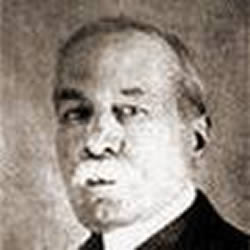 Rene Lalique Arrives To Find Soldiers At The Gates Of His Wingen Lalique Glass Factory: It’s September 1939. The Germans are on the march, having invaded Poland on September 1st, and war is thought iikely to spread throughout Europe. Near the Maginot Line in eastern France, towns are evacuated as France prepares for the invasion everyone knows is coming. A 79 year old white mustached Rene Lalique rushes from Paris to Wingen to try to save countless objects, molds, and materials before it all disappears in the sweep and chaos of war. Read about it in the article in the Time Magazine Issue of October 30, 1939. That issue and lots of other great Rene Lalique related historical items, are available for purchase in the Lalique Library Section on Period Magazines, Auction and Exhibition Catalogues which contain R Lalique information, here at RLalique.com Rene Lalique Arrives To Find Soldiers At The Gates Of His Wingen Lalique Glass Factory: It’s September 1939. The Germans are on the march, having invaded Poland on September 1st, and war is thought iikely to spread throughout Europe. Near the Maginot Line in eastern France, towns are evacuated as France prepares for the invasion everyone knows is coming. A 79 year old white mustached Rene Lalique rushes from Paris to Wingen to try to save countless objects, molds, and materials before it all disappears in the sweep and chaos of war. Read about it in the article in the Time Magazine Issue of October 30, 1939. That issue and lots of other great Rene Lalique related historical items, are available for purchase in the Lalique Library Section on Period Magazines, Auction and Exhibition Catalogues which contain R Lalique information, here at RLalique.com
And for additional information on the life of the great Rene Lalique, check out the comprehensive Lalique biography, here at RLalique.com.
Tags: Rene Lalique Biography, Rene Lalique History and R Lalique History
Posted in R Lalique and Rene Lalique History | No Comments »
Rene Lalique: Inventor of the Satellite Dish
March 13th, 2009
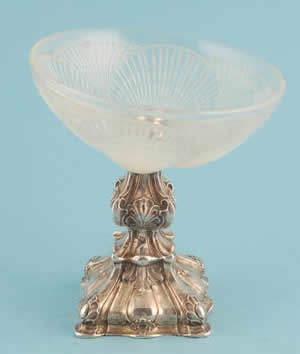 It was announced today that the great Frenchman Rene Lalique has been found by researchers to be the actual inventor of the Satellite Dish! Exhaustive research has uncovered the fact that Arthur C. Clarke, who until today was generally credited with being the inventor of the Satellite Dish, received the photographed object as a gift from Rene Lalique, and that the ideas for his seminal article titled “Extra-terrestrial Relays”, which appeared in the October 1945 edition of the British magazine Wireless World, were all inspired by the design and ideas embodied in this Rene Lalique object. Scientific researchers and the entire scientific community today stand in awe of the great Rene Lalique, who until this discovery, was thought to be only the inventor of modern jewelry, the man responsible for the modern perfume bottle industry, the greatest glassmaker in the history of the world, a world class creator of art objects, and an inventor of industrial techniques of historical proportions. Jaws are dropping from Cambridge Massachusetts to Cambridge England as the true genius of the great Lalique has been revealed. Amazingly, Rene Lalique had such foresight, that he invented the Satellite Dish before there were even satellites! This historically important design by Lalique for the Satellite Dish is going up for auction on March 18th at Burstow & Hewett Auctions in Battle Abbey England. Listing information can be found in our Worldwide R Lalique at Auction Section. The auction house, which expects this amazing object to reach at least 5,000,000 British Pounds, has announced that all proceeds from the sale will go toward developing the UK equivalent of the SETI project in the United States. Until now, the Search for Extra Terrestrial Intelligence has been met with some scheptisim by many scientisits. But now that it’s known that the Great Lalique invented this dish before there were satellites, all major members of the scientific community agree that the only thing he could have in mind was to listen not for cable TV signals or GPS coordinates, but for E.T.! And based on the unmatched genius of Rene Lalique, the scientific community feels that if Lalique thought E.T. was out there, then E.T. must in fact exist. A worldwide effort is now underway to build additional SETI sites on half a dozen continents. Meanwhile, all biographers of Lalique are scrambling to re-write their books to incorporate these new findings, and both art and scientific scholars are pouring over the thousands of known Rene Lalique drawings, looking for further evidence of his scientific genius. And in a related matter, the Royal Academy has launched an investigation into Arthur C. Clarke’s failure to credit Rene Lalique with the basic ideas for the article which Clarke published in 1945. This investigation may result in the stripping of all previous honors given to Clarke by the Academy. Additional updates will be provided as news breaks. It was announced today that the great Frenchman Rene Lalique has been found by researchers to be the actual inventor of the Satellite Dish! Exhaustive research has uncovered the fact that Arthur C. Clarke, who until today was generally credited with being the inventor of the Satellite Dish, received the photographed object as a gift from Rene Lalique, and that the ideas for his seminal article titled “Extra-terrestrial Relays”, which appeared in the October 1945 edition of the British magazine Wireless World, were all inspired by the design and ideas embodied in this Rene Lalique object. Scientific researchers and the entire scientific community today stand in awe of the great Rene Lalique, who until this discovery, was thought to be only the inventor of modern jewelry, the man responsible for the modern perfume bottle industry, the greatest glassmaker in the history of the world, a world class creator of art objects, and an inventor of industrial techniques of historical proportions. Jaws are dropping from Cambridge Massachusetts to Cambridge England as the true genius of the great Lalique has been revealed. Amazingly, Rene Lalique had such foresight, that he invented the Satellite Dish before there were even satellites! This historically important design by Lalique for the Satellite Dish is going up for auction on March 18th at Burstow & Hewett Auctions in Battle Abbey England. Listing information can be found in our Worldwide R Lalique at Auction Section. The auction house, which expects this amazing object to reach at least 5,000,000 British Pounds, has announced that all proceeds from the sale will go toward developing the UK equivalent of the SETI project in the United States. Until now, the Search for Extra Terrestrial Intelligence has been met with some scheptisim by many scientisits. But now that it’s known that the Great Lalique invented this dish before there were satellites, all major members of the scientific community agree that the only thing he could have in mind was to listen not for cable TV signals or GPS coordinates, but for E.T.! And based on the unmatched genius of Rene Lalique, the scientific community feels that if Lalique thought E.T. was out there, then E.T. must in fact exist. A worldwide effort is now underway to build additional SETI sites on half a dozen continents. Meanwhile, all biographers of Lalique are scrambling to re-write their books to incorporate these new findings, and both art and scientific scholars are pouring over the thousands of known Rene Lalique drawings, looking for further evidence of his scientific genius. And in a related matter, the Royal Academy has launched an investigation into Arthur C. Clarke’s failure to credit Rene Lalique with the basic ideas for the article which Clarke published in 1945. This investigation may result in the stripping of all previous honors given to Clarke by the Academy. Additional updates will be provided as news breaks.
For additional information on the life and works of the great Rene Lalique, check out the detailed Rene Lalique biography, here at RLalique.com.
Tags: Rene Lalique Biography
Posted in R Lalique and Rene Lalique History | 1 Comment »
|

 The newly renamed Corning Flint Glass Works was up and operating in 1868, but by 1870 had gone broke. Fortuitously Houghton’s two sons were able to get the business back (sans Houghton Sr.), and succeeded in getting the company on a firmer financial footing, thanks to a small number of products such as colored signal lights for railroads!*
The newly renamed Corning Flint Glass Works was up and operating in 1868, but by 1870 had gone broke. Fortuitously Houghton’s two sons were able to get the business back (sans Houghton Sr.), and succeeded in getting the company on a firmer financial footing, thanks to a small number of products such as colored signal lights for railroads!* Corning has high tech, high talent, and very low turnover. They are so heavy on innovation and invention, you get the feeling that when a company needs a glass problem solved and approaches Corning, that more often than not a Corning guy in the room says, “We’ve got something on the shelf (from 1, 2, 10, or 20 years ago) we can make work for that.”
Corning has high tech, high talent, and very low turnover. They are so heavy on innovation and invention, you get the feeling that when a company needs a glass problem solved and approaches Corning, that more often than not a Corning guy in the room says, “We’ve got something on the shelf (from 1, 2, 10, or 20 years ago) we can make work for that.” The museum is an independent and not-for-profit organization whose mission it to tell about and keep alive the history and the art of glass. In addition to being an operating museum visited by something like 400,000 people per year, it also holds seminars, classes, demonstrations, workshops, and lectures. It has everything from glassmaking to glass breaking demonstrations, and museum visitors can literally make their own glass as part of their experience at the Corning. On top of all that, the museum is active in both scientific research and publishing on a wide variety of glass related topics.
The museum is an independent and not-for-profit organization whose mission it to tell about and keep alive the history and the art of glass. In addition to being an operating museum visited by something like 400,000 people per year, it also holds seminars, classes, demonstrations, workshops, and lectures. It has everything from glassmaking to glass breaking demonstrations, and museum visitors can literally make their own glass as part of their experience at the Corning. On top of all that, the museum is active in both scientific research and publishing on a wide variety of glass related topics. Also part of the museum is the Rakow research library (named after significant benefactors of the museum), the leading research library on glass anywhere in the world. The library has an extensive collection of original period materials on all aspects of glass and glassmaking. Of note is that the collection includes some great original materials related to Rene Lalique (yes, we’re getting to that guy soon:) some of which previously resided right here at World Headquarters! Of course, these are but a small part of the over 2000 documents relating to Lalique’s glass production housed at the Rakow.
Also part of the museum is the Rakow research library (named after significant benefactors of the museum), the leading research library on glass anywhere in the world. The library has an extensive collection of original period materials on all aspects of glass and glassmaking. Of note is that the collection includes some great original materials related to Rene Lalique (yes, we’re getting to that guy soon:) some of which previously resided right here at World Headquarters! Of course, these are but a small part of the over 2000 documents relating to Lalique’s glass production housed at the Rakow. But in 2011, Stanford and Elaine Steppa, New Jersey residents with a longtime involvement in the works of the great Lalique, donated about 400 items to the museum. Most of the items were commercial production pieces, which by their numbers sampled the largest part of the gamut, in time and types, of Lalique’s commercial works. And there were also a few amazing rare unique and nearly unique items as well.
But in 2011, Stanford and Elaine Steppa, New Jersey residents with a longtime involvement in the works of the great Lalique, donated about 400 items to the museum. Most of the items were commercial production pieces, which by their numbers sampled the largest part of the gamut, in time and types, of Lalique’s commercial works. And there were also a few amazing rare unique and nearly unique items as well.
 Our takeaway*** from an in-depth interview with the exhibition curator Kelley Jo Elliot**** can be boiled to down to one overriding message. The purpose of the exhibition is to tell the story. From the Cire Perdue Vase, to tell how he did it and how it came to be. From the 1893 exhibition medal, to tell what his goals were, what was important to him, and how he was trying to achieve his aims. From the round green glass invitation medallion, to show his technique and his touch. And from the iconic commercial R. Lalique items such as the Serpent Vase, the Tourbillons Vase, or the Suzanne Statue, to be able to explain in the context of Lalique, his world and his history, how these wonderful art glass pieces were developed.
Our takeaway*** from an in-depth interview with the exhibition curator Kelley Jo Elliot**** can be boiled to down to one overriding message. The purpose of the exhibition is to tell the story. From the Cire Perdue Vase, to tell how he did it and how it came to be. From the 1893 exhibition medal, to tell what his goals were, what was important to him, and how he was trying to achieve his aims. From the round green glass invitation medallion, to show his technique and his touch. And from the iconic commercial R. Lalique items such as the Serpent Vase, the Tourbillons Vase, or the Suzanne Statue, to be able to explain in the context of Lalique, his world and his history, how these wonderful art glass pieces were developed.


 In 1860, the year before the American Civil War started, 10 year old Jesse Boot of Nottingham England began helping his mother run the family medicine shop when his father John died. By age 13 he left school to concentrate on his work in the shop. In the ensuing decades, Jesse would turn the single medicine shop into the major national chain Boots the Chemists. 60 years later in 1920, he sold control of the “Chemists to the Nation” to an American company. Jesse died on the Channel Island of Jersey 11 years later in 1931.
In 1860, the year before the American Civil War started, 10 year old Jesse Boot of Nottingham England began helping his mother run the family medicine shop when his father John died. By age 13 he left school to concentrate on his work in the shop. In the ensuing decades, Jesse would turn the single medicine shop into the major national chain Boots the Chemists. 60 years later in 1920, he sold control of the “Chemists to the Nation” to an American company. Jesse died on the Channel Island of Jersey 11 years later in 1931. Boot was also a philanthropist, especially in Nottingham and in Jersey. For one of many examples, he donated the land for what is now the University of Nottingham, which opened in 1928, where the Jesse Boot Chair in Chemistry was named in his honor.
Boot was also a philanthropist, especially in Nottingham and in Jersey. For one of many examples, he donated the land for what is now the University of Nottingham, which opened in 1928, where the Jesse Boot Chair in Chemistry was named in his honor.
 An organization named The Friends of the Glass Church has been set-up under the auspices of the Lieutenant Governor of Jersey, Lieutenant General Andrew Ridgway, to raise funds for the renovations. They have already raised approximately £140,000 toward the project. Updating of the roof was finished in 2010. Also the States of Jersey has approved a matching funds grant of £125,000. Phase two, which is the refurbishment of the bell tower, bells, and some asbestos removal, should be completed in early October, at which time the church will re-open.
An organization named The Friends of the Glass Church has been set-up under the auspices of the Lieutenant Governor of Jersey, Lieutenant General Andrew Ridgway, to raise funds for the renovations. They have already raised approximately £140,000 toward the project. Updating of the roof was finished in 2010. Also the States of Jersey has approved a matching funds grant of £125,000. Phase two, which is the refurbishment of the bell tower, bells, and some asbestos removal, should be completed in early October, at which time the church will re-open. St. Matthew’s home, the island of Jersey has a rich history owing to its location between France and England. It has a population of around 100,000, and both French and English are spoken there. Jersey is a separate possession of the crown; it’s a dependency and not part of the United Kingdom. It even has its own currency, though several other currencies also circulate on the island. It’s a crossroads of cultures and activities.
St. Matthew’s home, the island of Jersey has a rich history owing to its location between France and England. It has a population of around 100,000, and both French and English are spoken there. Jersey is a separate possession of the crown; it’s a dependency and not part of the United Kingdom. It even has its own currency, though several other currencies also circulate on the island. It’s a crossroads of cultures and activities.

 Rene Lalique moved in 1902 to a new residence and workshop at 40 Cours la Reine in Paris. The building was a renovation totaling five floors. The first two floors were show and retail space for Lalique’s expanding business. There was also Lalique’s workshop and Lalique’s residence above.
Rene Lalique moved in 1902 to a new residence and workshop at 40 Cours la Reine in Paris. The building was a renovation totaling five floors. The first two floors were show and retail space for Lalique’s expanding business. There was also Lalique’s workshop and Lalique’s residence above.
 If you are in Paris though, you may have trouble finding the doors at 40 Cours la Reine. Why? Because the street has been renamed to 40 Cour d’Albert!
If you are in Paris though, you may have trouble finding the doors at 40 Cours la Reine. Why? Because the street has been renamed to 40 Cour d’Albert! And don’t forget, you can find links to all resources related to Rene Lalique Architecture at RLalique.com in the
And don’t forget, you can find links to all resources related to Rene Lalique Architecture at RLalique.com in the  And lest you be left in wonder, yes, World Headquarters is not without its own great glass and metal work door. Notice all the similarities? The great Lalique doors have glass and our door has glass. The great Lalique doors have metal and our door has metal. The Lalique doors open and close and our door opens and closes. Pretty similar right? It’s almost freaky the number of things the World Headquarter door has in common with the Lalique doors. Too bad it can’t hold a candle to* the work of the great Rene Lalique 🙂 Hmmmmm…..
And lest you be left in wonder, yes, World Headquarters is not without its own great glass and metal work door. Notice all the similarities? The great Lalique doors have glass and our door has glass. The great Lalique doors have metal and our door has metal. The Lalique doors open and close and our door opens and closes. Pretty similar right? It’s almost freaky the number of things the World Headquarter door has in common with the Lalique doors. Too bad it can’t hold a candle to* the work of the great Rene Lalique 🙂 Hmmmmm….. *”Can’t hold a candle to” is an expression from the days before electric lights. When a person had to do some work in the dark, it might require a helper to hold a candle to illuminate the work area. Simple job, holding the candle. Of course, if your skill level or attention level or work ethic was so low that you could not properly perform the task of holding the candle it would put you in a negative light (no pun intended on the light thing). Anyway, can’t hold a candle to whatever, became a phrase to denote low talent or low worthiness by comparison to something else.
*”Can’t hold a candle to” is an expression from the days before electric lights. When a person had to do some work in the dark, it might require a helper to hold a candle to illuminate the work area. Simple job, holding the candle. Of course, if your skill level or attention level or work ethic was so low that you could not properly perform the task of holding the candle it would put you in a negative light (no pun intended on the light thing). Anyway, can’t hold a candle to whatever, became a phrase to denote low talent or low worthiness by comparison to something else. For example, there is no website in the world about Rene Lalique and his works that can hold a candle to RLalique.com! Don’t know how we thought up this great example, it just popped in our heads!
For example, there is no website in the world about Rene Lalique and his works that can hold a candle to RLalique.com! Don’t know how we thought up this great example, it just popped in our heads! Rene Lalique created a wonderful fountain for the 1925 Paris Exposition Des Arts Décoratifs, the Art Deco Exposition. And full size Source De La Fontaine Lalique statues of the designs that were incorporated into that fountain sell for many thousands of dollars. In creating his great fountain, Les Sources De France, Rene Lalique was following in the footsteps of the tradition in Paris of the great French fountain builders dating back to the middle ages when fountains were first constructed to provide drinking water to the people of Paris!
Rene Lalique created a wonderful fountain for the 1925 Paris Exposition Des Arts Décoratifs, the Art Deco Exposition. And full size Source De La Fontaine Lalique statues of the designs that were incorporated into that fountain sell for many thousands of dollars. In creating his great fountain, Les Sources De France, Rene Lalique was following in the footsteps of the tradition in Paris of the great French fountain builders dating back to the middle ages when fountains were first constructed to provide drinking water to the people of Paris! Today, this style cendrier in all its forms is commonly called a ring dish by sellers either because they don’t know, or because “ashtray” is not usually the best selling point.
Today, this style cendrier in all its forms is commonly called a ring dish by sellers either because they don’t know, or because “ashtray” is not usually the best selling point. Mr. Dawes is in New York this week in his role as a consignment director for Heritage Auctions where he is overseeing this year’s largest Rene Lalique Auction on Thursday December 10th. We have previously written about this exciting
Mr. Dawes is in New York this week in his role as a consignment director for Heritage Auctions where he is overseeing this year’s largest Rene Lalique Auction on Thursday December 10th. We have previously written about this exciting  Rene Lalique died quietly in the home of his famous glass panel doors, at 40 Cours la Reine in Paris on May 1st, 1945* just a week before Victory in Europe (VE) Day, marking the Atlantic end of WW II.
Rene Lalique died quietly in the home of his famous glass panel doors, at 40 Cours la Reine in Paris on May 1st, 1945* just a week before Victory in Europe (VE) Day, marking the Atlantic end of WW II. Rene Lalique rode the industrial revolution and the new consumerism to the top in many fields. He saw opportunity in many areas of the industrial revolution. And he worked out the manufacturing techniques to make his useful consumer art achievable and affordable in a way and on a scale that no artist before him had ever accomplished. He was the right man in the right place at the right moment in time.
Rene Lalique rode the industrial revolution and the new consumerism to the top in many fields. He saw opportunity in many areas of the industrial revolution. And he worked out the manufacturing techniques to make his useful consumer art achievable and affordable in a way and on a scale that no artist before him had ever accomplished. He was the right man in the right place at the right moment in time. Lalique and Haviland Join Forces and Open A Joint Flagship Store in London: A renewal of old ties between the family name of Rene Lalique and the family name of David Haviland was cemented in London recently, with the opening of the new Lalique Haviland joint flagship store on Conduit Street. This store name recalls ties between these two great families that go back to 1916.
Lalique and Haviland Join Forces and Open A Joint Flagship Store in London: A renewal of old ties between the family name of Rene Lalique and the family name of David Haviland was cemented in London recently, with the opening of the new Lalique Haviland joint flagship store on Conduit Street. This store name recalls ties between these two great families that go back to 1916. In 1892, Lalique had a daughter by his second wife, whom they named Suzanne. Suzanne became an accomplished designer and painter in her own right, without any formal art training. Growing up as close to the great Lalique as one can get, was all the training required. Her vase designs cover two pages in the
In 1892, Lalique had a daughter by his second wife, whom they named Suzanne. Suzanne became an accomplished designer and painter in her own right, without any formal art training. Growing up as close to the great Lalique as one can get, was all the training required. Her vase designs cover two pages in the  As things would have it, in 1916 Suzanne met the photographer Paul Haviland, the son of Charles Haviland, when Paul was slightly older than shown here in an 1884 portrait at age 4 by noted painter Pierre-Auguste Renoir. Paul was an accomplished photographer, and among his other claims to fame, he would be given photo credit for the pictures in the 1932 R.Lalique Catalogue, a fact omitted from the 1981 Dover reprint! Paul was born in Paris, but graduated from Harvard and spent much of his early life in the United States. Having been called back to France to help with the management of the company in 1916, that same year he met and by 1917 would marry Suzanne Lalique. Long story short, Charles died in 1921. Theodore died two years earlier in 1919. The Haviland et Cie family businesses of Charles had lots of problems and became a full employment company for lawyers! Haviland et Cie eventually slipped out of family ownership and was liquidated in 1931, but the Theodore branch of the family continued on with their company under the leadership of Theodore’s oldest son William, who had joined the company in 1903 and who took control upon the death of his father. The Haviland name and company was restored to unity and total family ownership in 1941 under William Haviland, when he and other relatives purchased all the names, designs, and rights of the previously liquidated Haviland et Cie. One interesting point is that from 1942 to 1957, Haviland was produced in Pennsylvania, production having been started up there by William in the chaos that was World War II.
As things would have it, in 1916 Suzanne met the photographer Paul Haviland, the son of Charles Haviland, when Paul was slightly older than shown here in an 1884 portrait at age 4 by noted painter Pierre-Auguste Renoir. Paul was an accomplished photographer, and among his other claims to fame, he would be given photo credit for the pictures in the 1932 R.Lalique Catalogue, a fact omitted from the 1981 Dover reprint! Paul was born in Paris, but graduated from Harvard and spent much of his early life in the United States. Having been called back to France to help with the management of the company in 1916, that same year he met and by 1917 would marry Suzanne Lalique. Long story short, Charles died in 1921. Theodore died two years earlier in 1919. The Haviland et Cie family businesses of Charles had lots of problems and became a full employment company for lawyers! Haviland et Cie eventually slipped out of family ownership and was liquidated in 1931, but the Theodore branch of the family continued on with their company under the leadership of Theodore’s oldest son William, who had joined the company in 1903 and who took control upon the death of his father. The Haviland name and company was restored to unity and total family ownership in 1941 under William Haviland, when he and other relatives purchased all the names, designs, and rights of the previously liquidated Haviland et Cie. One interesting point is that from 1942 to 1957, Haviland was produced in Pennsylvania, production having been started up there by William in the chaos that was World War II. In February of 2008, the Lalique Cristal Company was acquired by the Swiss company
In February of 2008, the Lalique Cristal Company was acquired by the Swiss company  Rene Lalique Arrives To Find Soldiers At The Gates Of His Wingen Lalique Glass Factory: It’s September 1939. The Germans are on the march, having invaded Poland on September 1st, and war is thought iikely to spread throughout Europe. Near the Maginot Line in eastern France, towns are evacuated as France prepares for the invasion everyone knows is coming. A 79 year old white mustached Rene Lalique rushes from Paris to Wingen to try to save countless objects, molds, and materials before it all disappears in the sweep and chaos of war. Read about it in the article in the Time Magazine Issue of October 30, 1939. That issue and lots of other great Rene Lalique related historical items, are available for purchase in the Lalique Library Section on
Rene Lalique Arrives To Find Soldiers At The Gates Of His Wingen Lalique Glass Factory: It’s September 1939. The Germans are on the march, having invaded Poland on September 1st, and war is thought iikely to spread throughout Europe. Near the Maginot Line in eastern France, towns are evacuated as France prepares for the invasion everyone knows is coming. A 79 year old white mustached Rene Lalique rushes from Paris to Wingen to try to save countless objects, molds, and materials before it all disappears in the sweep and chaos of war. Read about it in the article in the Time Magazine Issue of October 30, 1939. That issue and lots of other great Rene Lalique related historical items, are available for purchase in the Lalique Library Section on  It was announced today that the great Frenchman Rene Lalique has been found by researchers to be the actual inventor of the Satellite Dish! Exhaustive research has uncovered the fact that Arthur C. Clarke, who until today was generally credited with being the inventor of the Satellite Dish, received the photographed object as a gift from Rene Lalique, and that the ideas for his seminal article titled “Extra-terrestrial Relays”, which appeared in the October 1945 edition of the British magazine Wireless World, were all inspired by the design and ideas embodied in this Rene Lalique object. Scientific researchers and the entire scientific community today stand in awe of the great Rene Lalique, who until this discovery, was thought to be only the inventor of modern jewelry, the man responsible for the modern perfume bottle industry, the greatest glassmaker in the history of the world, a world class creator of art objects, and an inventor of industrial techniques of historical proportions. Jaws are dropping from Cambridge Massachusetts to Cambridge England as the true genius of the great Lalique has been revealed. Amazingly, Rene Lalique had such foresight, that he invented the Satellite Dish before there were even satellites! This historically important design by Lalique for the Satellite Dish is going up for auction on March 18th at Burstow & Hewett Auctions in Battle Abbey England. Listing information can be found in our
It was announced today that the great Frenchman Rene Lalique has been found by researchers to be the actual inventor of the Satellite Dish! Exhaustive research has uncovered the fact that Arthur C. Clarke, who until today was generally credited with being the inventor of the Satellite Dish, received the photographed object as a gift from Rene Lalique, and that the ideas for his seminal article titled “Extra-terrestrial Relays”, which appeared in the October 1945 edition of the British magazine Wireless World, were all inspired by the design and ideas embodied in this Rene Lalique object. Scientific researchers and the entire scientific community today stand in awe of the great Rene Lalique, who until this discovery, was thought to be only the inventor of modern jewelry, the man responsible for the modern perfume bottle industry, the greatest glassmaker in the history of the world, a world class creator of art objects, and an inventor of industrial techniques of historical proportions. Jaws are dropping from Cambridge Massachusetts to Cambridge England as the true genius of the great Lalique has been revealed. Amazingly, Rene Lalique had such foresight, that he invented the Satellite Dish before there were even satellites! This historically important design by Lalique for the Satellite Dish is going up for auction on March 18th at Burstow & Hewett Auctions in Battle Abbey England. Listing information can be found in our 